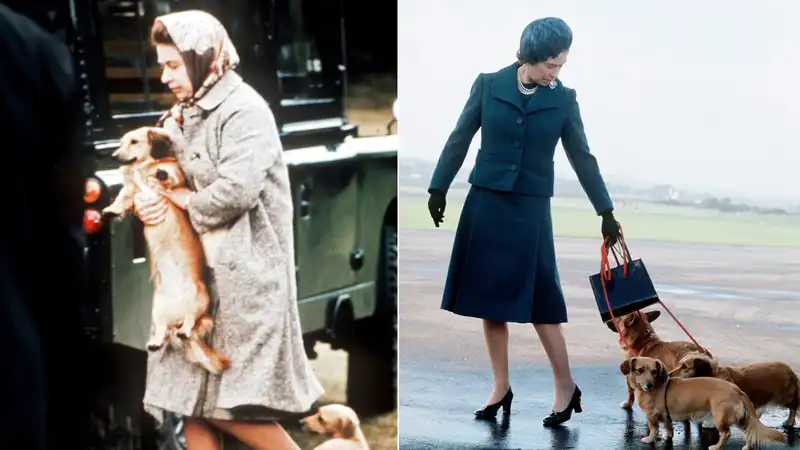The Ultimate Car Buying Guide
An automobile is likely to be the second largest purchase a person makes in his or her lifetime, after a house. And there are many things to consider when buying wheels: four-wheel drive. The smell of a new car. A sunroof. Bluetooth audio connectivity so you can sing "drivers license" while listening to Olivia Rodrigo while driving. But when making such a life-changing purchase, one must also consider the economics. [A car is more than just a means of transportation; it gives you freedom and flexibility. Tara, 32, a creative program manager in the financial technology industry, began to feel trapped in her Hoboken, NJ neighborhood during the pandemic. She doesn't want to be tied to the subway or bus lines (and wants to take her dog to hiking spots), so she is looking to buy her first car. Two auto industry all-stars, Liz Seeligson, Senior Business Director and Courtney West, Divisional Sales Director at Capital One (opens in new tab), offer Tara deals to help her buy a car with finances foremost in mind
Taxes.
Pre-tax monthly income: $13,354.94 Annual income before taxes: $160,000 Average monthly expenses including rent: $4,150 Total debt: $7,500 in credit cards and $91,302 in student loans Credit Score: 741 Credit scores affect loan amounts, interest rates, and down payments. Typically, the higher the credit score, the lower the interest rate. Car price range: $23,000 to $25,000 Tara wants something with four-wheel drive, leather seats, good gas mileage, and safety features (sensors, etc.). She likes to be high off the ground while driving and would like a crossover or compact SUV. Target monthly payment $400 or less. (Includes monthly expenses, insurance, gas, and parking) Total amount saved as a down payment on a car: $5,000
Know how much you can afford up front and how much you need. One of the first things you should do when you start buying a car is to decide how much you want to spend, how much you want to put down for a down payment, and how much you are comfortable making in monthly payments. A down payment can often help you get better financing terms and protect you from car depreciation. Traditionally, experts recommend putting down 20% (open in new tab) when buying a car, but according to Edmunds, the average amount is closer to 12%. Tara is targeting a $23,000 to $25,000 car and has $5,000 saved up as a down payment.
Purchasing a car of this price would likely require Tara to budget a bit more for monthly payments than the "under $400" that she would like. As an alternative, she could consider a less expensive vehicle, a larger down payment, or a long-term loan. -Interest rates (open in new tab) vary depending on the lender, manufacturer, and individual's credit score. Research different vehicles to find the best deals, and Capital One Auto Navigator (opens in new tab) is an excellent tool for viewing specific interest rates for the vehicles you are interested in. If you are looking for a zero percent interest rate, they are usually only offered as an incentive by a specific manufacturer on a particular model of car. Consider fuel economy. Generally speaking, small hybrid cars are fuel efficient and can get as much as 50 miles per gallon. But Tara's lifestyle revolves around traveling with her pup (open in new tab), and she wants a larger vehicle. A hybrid CUV (small utility vehicle), often called a crossover, still gets good gas mileage (up to 41 miles per gallon) and can meet all of Tara's wish list. -Courtney West
Don't forget the additional costs. Choosing a car and negotiating the sales price is only the first expense. Tara also needs to consider sales tax, registration fees, dealer fees, and other additional costs. If Tara owns a car, she will also need to pay for insurance, gasoline, maintenance, and parking. These costs will vary depending on the insurance Tara has, the car she chooses, and how she uses it. It is important for Tara to do her research and understand the total cost of ownership (opens in new tab) to see if it fits into her budget.
When signing on the dotted line, Tara has a few other products (open in new tab) (all completely optional) to consider that will increase her monthly payment but may reduce her out-of-pocket costs later. These products are sold by dealers. These products include extended warranties, which cover certain repairs after the car's warranty has expired; gap insurance, which covers the difference between the car payment and the value of the car in the event of theft or total loss; and maintenance plans, which cover oil changes and tire rotations. There are also maintenance plans that cover oil changes and tire rotations. Talk to your dealer to better understand what each of these products covers. -L.S. Consider both new and used cars. New cars have some advantages: you don't have to worry about the car's history, it has the latest technology, and many new cars come with at least a three-year, 36,000-mile warranty. However, there is a downside to buying a new car: cars typically depreciate by about 20-30% by the end of the first year (open in new tab). Not to mention, new cars are currently in short supply due to an industry-wide chip shortage, which drives up demand and creates higher-than-normal prices across the country.
Used cars, on the other hand, typically depreciate at a slower initial rate, and a well-maintained car can last well past 100k miles. Buying a used car can earn more money because someone else is bearing the initial depreciation costs. But buying a used car also has its drawbacks: because of the current shortage of new cars, the demand for used cars is also higher than usual, making negotiations more difficult than ever.
Tara should keep all of these factors in mind when making a decision. -C.W.
Consider eliminating sunroofs. Extra bells and whistles will drive up the price. Whatever car you choose, the base model will help keep the price low. -C.W.
Be prepared to discuss details with the dealer. Before going to the dealer, arm yourself with the right information (opens in new tab) and questions. Be upfront and transparent with the dealer about the research you have done on the model you are interested in (narrow down the list ahead of time (opens in new tab)). Also, don't be afraid to ask if they are willing to negotiate on price (in many cases, they are willing to do so if possible). Also look out for dealership-specific surcharges. Ask about those negotiations as well. -C.W.
Don't get scammed. Now, this information may seem obvious, but it is easier said than done. Here are some tips to help you buy a car with *proud* new car owner feelings, not buyer's remorse:
.






Comments